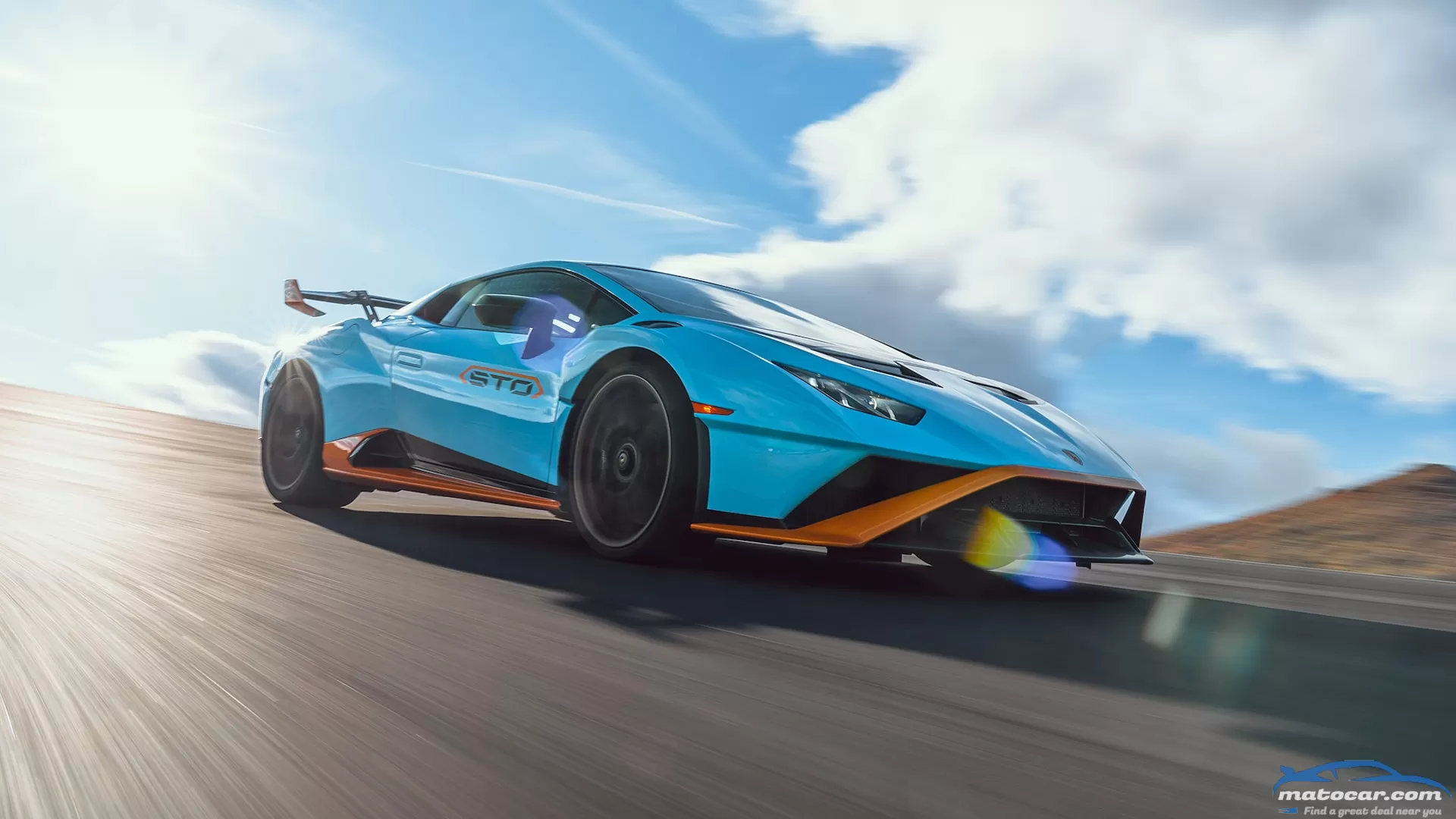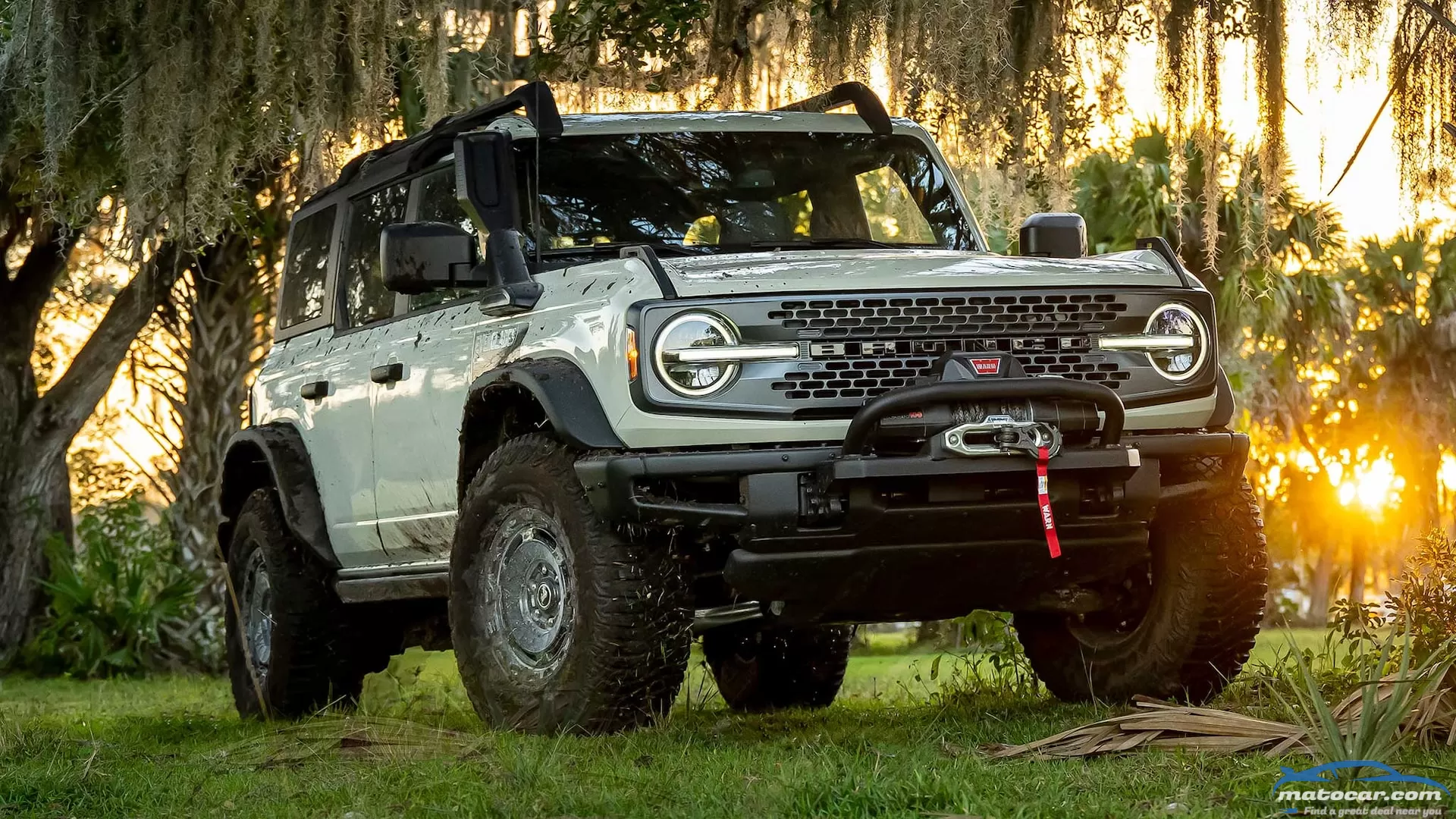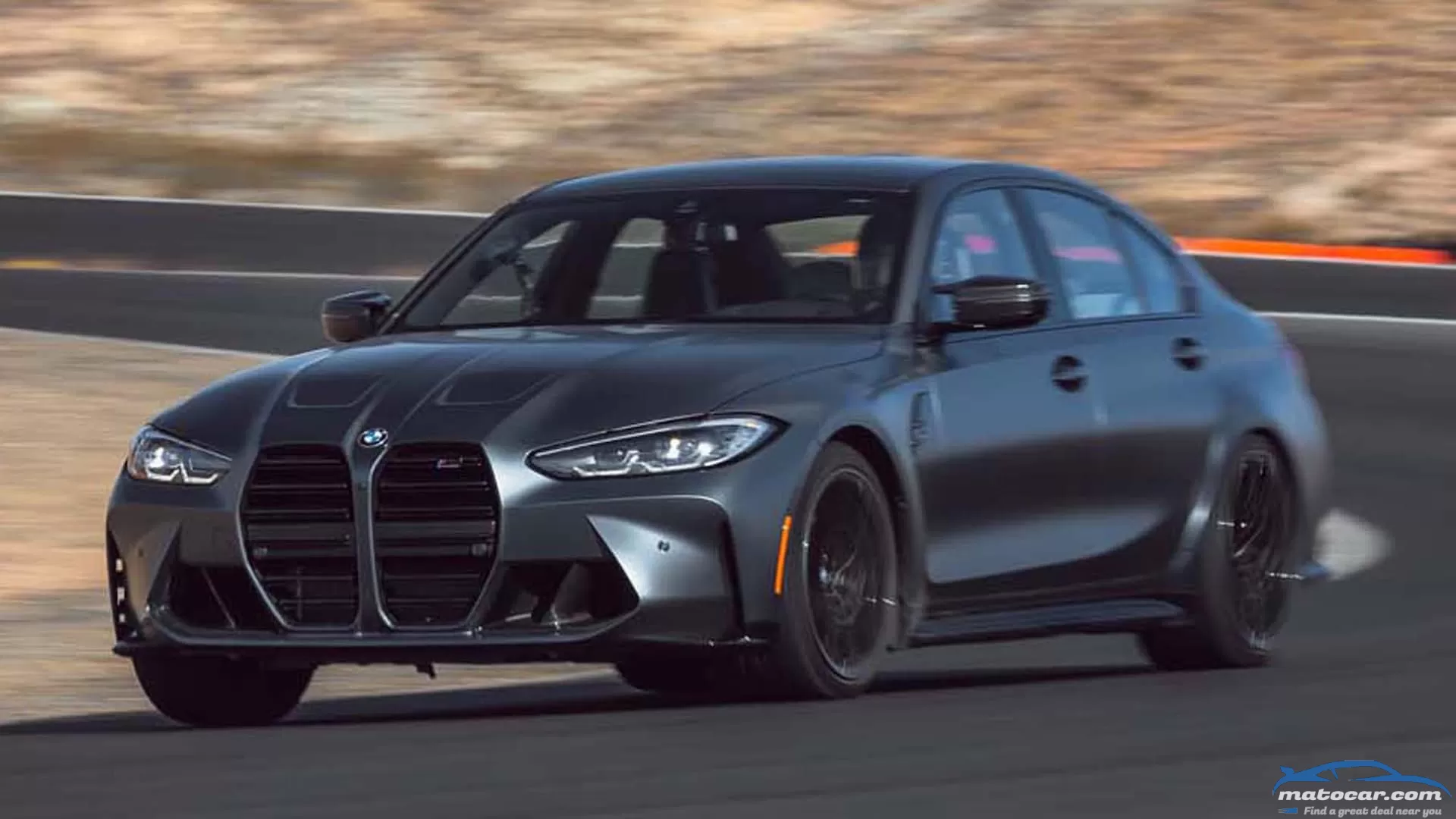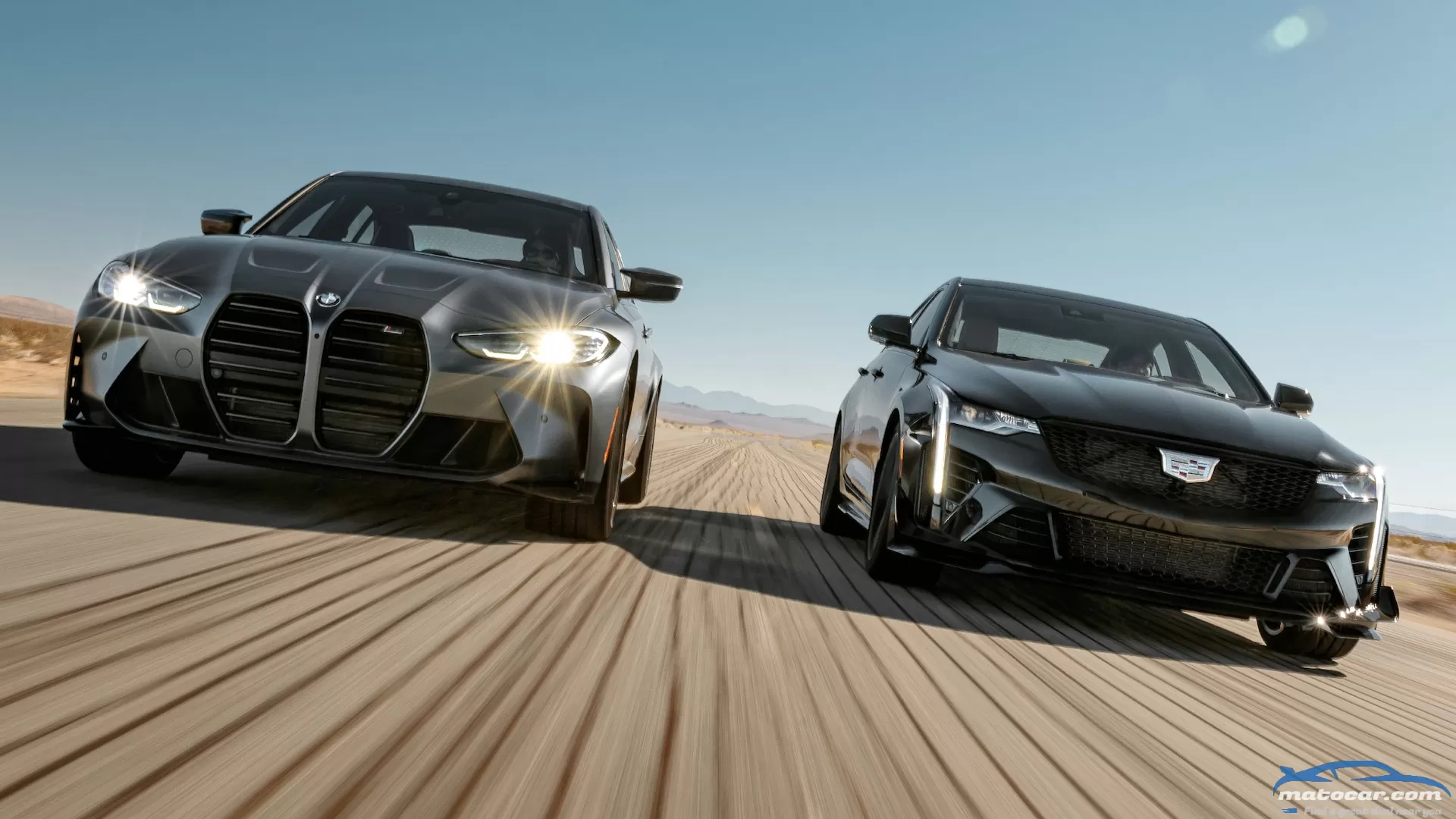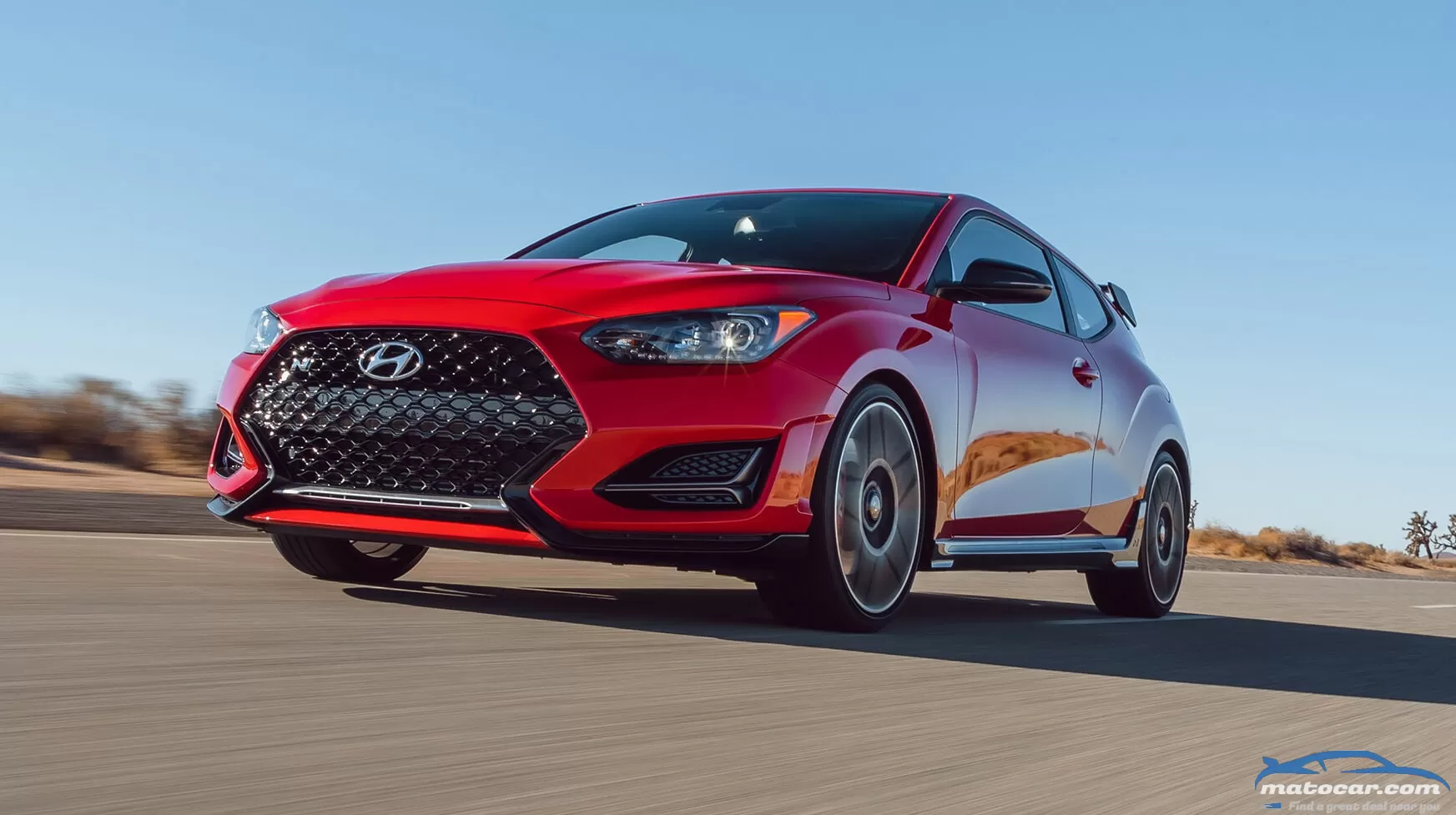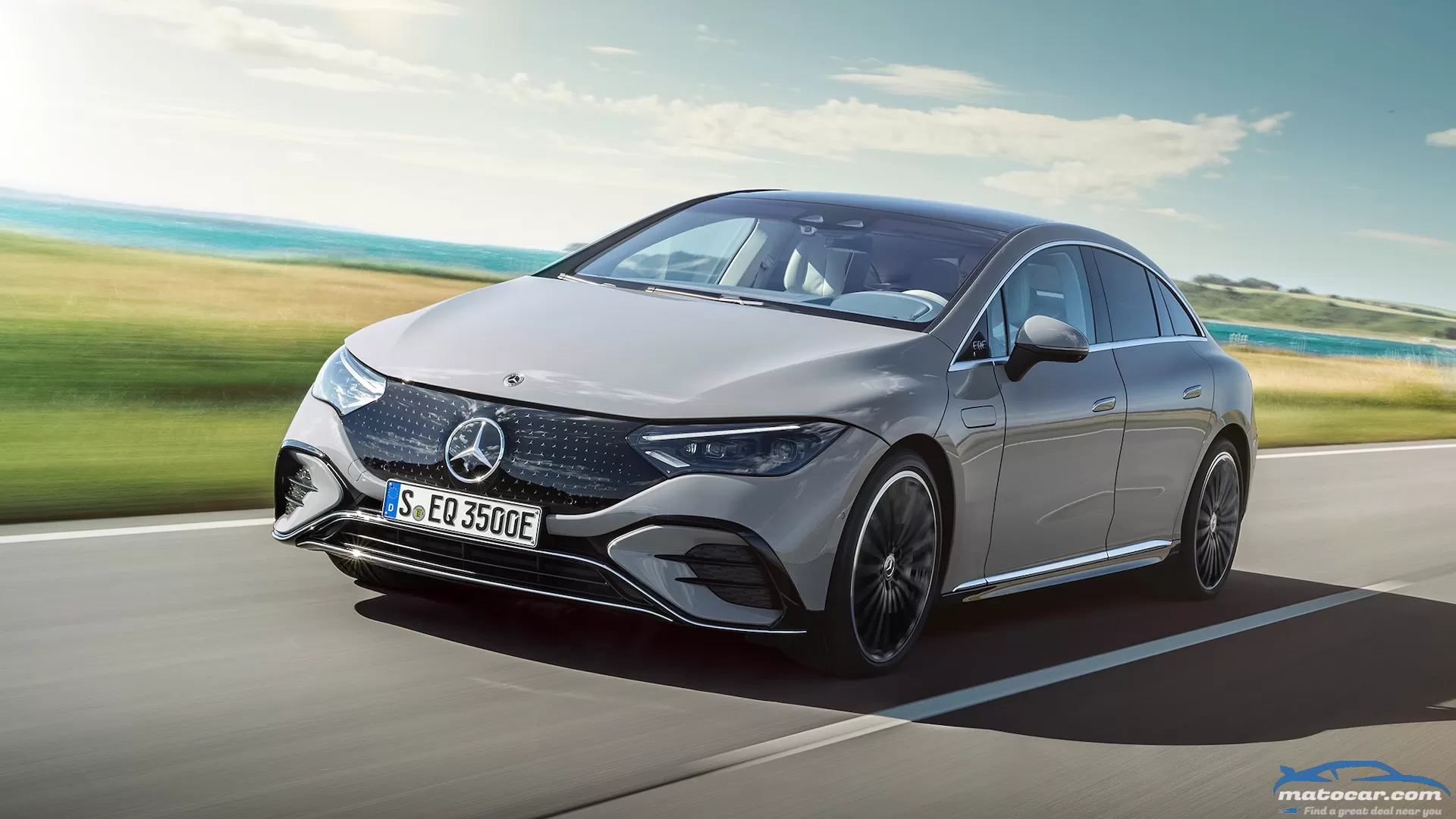Nissan used the 2022 Chicago Auto Show to introduce a trio of concepts based on the 2022 Nissan Frontier compact pickup. All three truck concepts start with a crew cab format and essentially customize with Nissan and Nismo accessories, part of a larger goal of growing this side of the business.Arguably the most interesting part: the wheels on the 2022 Frontier Project 72X and Project Hardbody concepts that attracted a lot of attention.Nissan Frontier Project 72X SteeliesProject 72X is a modern take on the Datsun 720 pickup, introduced in 1979 as a bare-bones affordable truck, right down to its white steel wheels. We asked designer Hiren Patel, from Nissan Design America, how he resurrected the look for the Project 72X concept.Patel said the steel wheels date back to his original sketches. They looked cool so he started searching for some. "I was googling steel wheels from aftermarket stuff." To his surprise, he found a listing that showed the spare tire on the Nissan Xterra had the same bolt pattern. To his even greater surprise, he realized the Frontier used the same spare, he just wasn't aware of it since the tire is hidden under the truck. A happy find.The 17-inch spare (the original 720 had a 15-inch) was painted white, shod with PRO-4X tires, and were a perfect fit for the concept's simple, lean, fun and cheap theme—nothing outlandish. Project 72X was going for an old-school compact truck feel.Nissan Frontier Project Hardbody ConceptAnother concept, Project Hardbody, pays homage to the Nissan D21 "Hardbody" truck from the '89s and '90s. Again, Patel sketched a wheel design lightly lifted from the iconic 15-inch block-style wheels on the original Hardbody. "I wanted that look, it was so instantly recognizable, and make it modern."The designer started off looking at photos of the monoblock wheel—there were no original company blueprints to work with. "I wanted the look but did not want to copy it exactly," so maybe the lack of exact reference wasn't so bad.Patel bought himself a 1988 Pathfinder, a first-generation two-door version of the SUV, and it had the same 15-inch wheels. He added them to the concept sketch and the result was polarizing. Not everyone supported it. Patel persisted and when the first foam model was created with the three-spoke wheels, the doubters came onboard.For the concept, the design was for a larger and wider 17x8 inch wheel, designed using 3D modeling software and then milled from billet aluminum in the shop in the design studio. Six of them were made. One was sent for testing to test its strength and viability; the other five are on the concept with 33-inch tires.Will any of them be made available to the public? Patel says Nissan will use public feedback on all three Frontier concepts—the third is an overlander called Project Adventure—to help decide whether to put any of the concepts into production. Smart dealers might want to order extra spare rubber and invest in a can of white spray paint.
Miss the Big Game this year? Maybe you don't get into the whole "sports thing." Either way, the commercials are always a huge part of the Super Bowl broadcast. Seeing as how you're reading about those game-day ads here, on MotorTrend, guess what? We're going to talk about the car commercials from Super Bowl LVI, of course! Here's a quick recap of the car spots we spotted during the game:Chevrolet | "New Generation"Fans of "The Sopranos" probably spat out their drinks and sat up when the HBO series' theme song "Woke Up This Morning" started oozing from their speakers while the show's opening sequence driving from New York City to New Jersey rolled on. But something in the iconic opening is different...James Gandolfini's Tony Soprano isn't peeking at us through the rearview mirror...it's his on-screen daughter, Meadow (Jamie-Lynn Sigler). And there's something different about Tony's '90s Chevy Suburban...the dashboard looks way too modern. Without giving away the ending, "New Generation" reimagines the Sopranos' original family ride as the new Silverado EV pickup. Cool.Hyundai | "History Of Evolution"Starring actor Jason Bateman in his more usual comedic guise—as opposed to his darker turn in the drama "Ozarks" on Netflix—this Hyundai ad runs viewers through major technological developments throughout history while reminding them that those developments always had a rough start. This pivots, eventually, to the concept of an electric vehicle, which Bateman says is now reaching maturity—thanks to, of course, the new Ioniq 5 electric crossover. We're not sure about the Ioniq 5 being the be-all, end-all of EVs, but it is a darn good battery-electric SUV. And affordable, too.Kia | "Robo Dog"This Kia spot is cute and includes a dog, ripping a page out of Subaru's advertising playbook. But while general audiences might find the robot-puppy-finding-a-new-home-with-a-human plotline endearing, it takes a closer read to realize Kia is plugging (pun intended) the new EV6 electric crossover's ability to power other things using its battery. To wit, at the end of the commercial, the robo-dog is "saved" by an EV6 driver using its "vehicle-to-load" charging function, which can deliver electricity from the battery to external sources, be it a large appliance during a power outage or a stricken robotic puppy.Nissan | "Thrill Driver"Viewers should by now be familiar with actress Brie Larson making appearances in Nissan ads. For the Super Bowl, Nissan throws in a few more stars, including Eugene Levy, Dave Bautista, and Danai Gurira, to shill an unlikely car: The 2023 Z sports car. Hey, we're all for sports cars, but it's definitely unusual for an automaker to use such high-dollar ad space for a low-volume, two-seat sports car.BMW | "Zeus & Hera"BMW's ad leverages the high-wattage star power of Arnold Schwartzenegger and Salma Hayek but fails to generate much of a spark for the new iX electric SUV. Basically, Arnold plays Zeus and Hayek plays Hera; the god is retired yet is always being asked to charge up dead electronic devices using his lightning power (thunder?). Clearly tiring of his role as a god-smartphone-charger, Zeus is relieved to be given an iX by Hera, presumably because it zaps up Zeus rather than the other way around.GM | "Dr. EV-il"Reprising his role as Dr. Evil from the iconic Austin Powers comedies, Mike Myers holds court in one of his classic boardroom scenes with other original castmembers, including his son Scott (Seth Green); number two, Number Two (Rob Lowe); and Frau Farbissina (Mindy Sterling), while discussing his latest plans for world domination. Only one hitch: Climate change, which is billed as a pressing issue to first surmount. Dr. Evil must save the world in order to take it over, in essence, and needs to lower his carbon footprint to help. This is where GM's growing lineup of EVs comes in to play, and explains why Dr. Evil has anything to do with GM's EV lineup—Dr. EV-il, get it? The gang drives off in a new Hummer EV, a Silverado EV, and what appears to be a Cadillac Lyriq.Porsche | "Topgun: Maverick x Porsche"Porsche is one automaker that likely doesn't need to advertise, but here they are! This is less a commercial for a specific Porsche model than a crossover ad for its sports cars and the upcoming sequel to "Top Gun." If you remember the original fighter-jet bromance cinematic masterpiece, then you remember the love interest of Tom Cruise's character drove a classic Porsche; we assume, based on this ad, that a Porsche will feature in the new film, "Top Gun: Maverick." Really, it doesn't matter, because Porsche has wisely leveraged one of the best theme songs ever for a car ad.Polestar | "No Compromises"The brief, simple commercial from Polestar, Volvo's all-electric offshoot, seems effective. Listing several "no" phrases while flashing over the body of a Polestar 2 EV, "No Compromises" is a quiet introduction for Polestar on a stage as big as the Super Bowl, but it'll surely get people talking, and that's exactly what an upstart automaker wants.
It's time to present the finalists for the inaugural MotorTrend Performance Vehicle of the Year. Yes, after running through our contenders—those rides that missed the cut for the final round of voting the PVOTY honors, we're introducing those that did make the finalist cut. One of these vehicles earned our Golden Calipers, having excelled in all six of our criteria (safety, value, advancement in design, engineering excellence, efficiency, and performance of intended function). The weighting of some of those criteria may differ slightly from our Car, Truck, and SUV of the Year competitions—after all, when outright performance is our focus, efficiency is perhaps graded on a curve—but every single one is considered when choosing our winner.Read on to meet the first four members of our finalist field—the rest will be unveiled tomorrow—to represent the cars that made it out of our initial round of voting following evaluations at Hyundai's Proving Ground outside of Los Angeles. The finalists then went on to road drives on Angeles Crest Highway and, later, grueling track tests at Willow Springs Raceway. Come back on Monday, February 14 to see which one emerged with the title!
There's nothing like shifting your own gears in a sports car like the 2022 Toyota GR86. With EVs taking over the market, the manual transmission is once again at risk of peril. Fortunately, a patent filed by Toyota with the US Patent Office was immediately spotted by the forums describing a complex new system to simulate the experience of driving a manual transmission, now without any of the thrilling danger of stalling.What Is It?When it comes to an EV like the upcoming Toyota "Sports EV," there is no gas engine that can stall out. That used to be the whole reason you need the clutch and a gearbox—to keep the engine from stalling, and to transition between gears, obviously. Why would Toyota bother having something like this on a car with no gears and likely near-instant torque on command?The patent filed by the Japanese brand a few months ago, but published this week, describes a system that uses a fake clutch, fake shifter, a three mode selector, and programming at the controller to simulate the experience of driving a manual transmission, just without the stalling.Full Manual ModeSo how does the patent say it works? Essentially, when you shift the "transmission shifter," the prospective EV's motor controller will increase or decrease the voltage—and, thus, the magnetic field controlling the rotor in the motor—and this effect is meant to simulate the torque feeling of each gear. There are three modes described in the patent.Both "clutch" and "clutchless" modes, as we're calling them based on what we see in the patent documents, operate this way. Some EVs do use a clutch to decouple and idle a permanent-magnet motor when it's not needed. However, that is not what is being operated in this mode. A third, automatic mode, lets the driver ignore the clutch pedal and shifter altogether, and operates as a traditional EV.The patent's clutch mode includes the need to operate the clutch pedal—and yes, there would be a third pedal in this car, but again, there is no true clutch being operated here. The voltage is changed to act as if you're not generating enough torque to move the vehicle. The motor won't stall and require you to restart it, it just won't go very fast or just won't move, like tugging on a gear or starting on a hill in a traditional car.No Clutch, No ProblemWhen operating in the other, clutchless mode, it will act similar to a DCT equipped vehicle using a regular stick shifter. You select the gear with the shifter, the controller modifies the voltage to the motor for each gear, and you "shift" through the "gears" to get the torque you want.The driver doesn't have to do anything with the clutch pedal in this mode. It's basically like knocking a normal automatic car into the "S" mode, where you can toggle "+" and "-" to control the gears with no clutch pedal.What Transmission?The automatic mode (again, our description based on what we saw in the patents) will act as a normal, "transmission-less" EV. The Toyota patent details how each mode calculates the torque the motor sends to the wheels, the torque demanded by the driver in relation to the throttle pedal and gear selector, and the amount of torque demanded by the throttle pedal position.There is even talk on how to train each mode to fit a specific driver profile with this type of pseudo-manual. It's unclear if this system would be built on current Toyota EV architecture and powertrains, or require broader vehicle development to be adapted to future cars.Early EV Conversions Did Have TransmissionsWhile early EV enthusiasts did stick a real transmission into their conversion projects, they mostly did it to try and assist the lackluster power and capacity available from lead-acid and nickel-cadmium batteries of the time, along with rudimentary controls for the motor. Most projects didn't even use the clutch or torque converter, and instead the motor was attached directly to the input shaft of the transmission.Today, thanks to lithium battery technology and controllers that can withstand higher amperes—along with much better cooling technology—you can truly build a car with monster V-8-like torque with battery power. The transmission just isn't needed as the motor actually potentially spins faster than is usable, and a reduction box is usually attached to the motor before heading to the wheels on EVs already. Perhaps plans could have this new EV "manual" replace or assist the current energy-reduction principle.Will It Stick?As a performance driver, you really want to have full control of your vehicle, but it gets tricky to continue to satisfy drivers with the input of a computer and more advanced technology. Not only is it technically obsolete, but it's also that little bit slower to shift, and it does force drivers to take their hands off the wheel. It's why a majority of race cars today utilize paddles behind the steering wheel rather than a stick that you must move around in a gate or even sequentially—speed, and a little intended safety.But we're not all racing drivers, and we have grown to love the manual transmission for the control it hands the driver. Heel-toeing into a corner to get the RPMs right is sublime. Sometimes you get a better lap time, being able to throttle the right amount of power down as you accelerate out of the corner if you know what you're doing. Some worry over major automakers pivoting to electrified technologies that completely render their charming stick and pedal technically obsolete. They want that feeling of rowing your own gears and operating a clutch. There isn't anything saying Toyota will bring this out, but it's exciting to see the brand thinking for enthusiasts, and worrying about making sure the future is still fun.
ProsNear limitless gripQuicker-than-you-can-think responsesBiblical brakes ConsConfusing drive modesNo performance auto-shifting modeNeeds a bigger shift lightIt's not often a car comes along where the only thing you can find to complain about are the names, functions, and number of drive modes, but here we are. The 2021 Lamborghini Huracán STO is so insanely good to drive, we're left with the nittiest nits to pick."You look at the STO and its wings 'n' things," deputy editor Alex Stoklosa said, "then consider that it's shoving a V-10's worth of power to only the rear wheels, and you assume it'll be hairier than a barbershop floor. Not at all. There is so much grip front and rear, and the chassis is so balanced, that it drives nothing like it looks. There is no evil here. Sure, the Lambo hustles in ways most cars don't or can't, but it simply has no vices while furiously raging."You could call it a complaint for lack of others, but the amount of time some judges felt they needed to fully understand the car's limits was a bit longer than usual, simply because the limits are so high you need a telescope to see them. Once you truly understand what it's capable of, though, you never want to stop driving it. On the street, on the track, it doesn't matter.Credit the brilliant blending of adaptive magnetorheological shock absorbers, rear steering, racing brakes, and Bridgestone Potenza Race tires for the STO's direct connection to your brain's pleasure center. The front end changes direction quicker than you can think it while the rear stays behind you no matter the speed unless you very deliberately kick it out. When you do, the car breaks away beautifully, allowing you to ride that slip into the perfect amount of rotation.Mostly, though, it just goes. The damn near race-spec V-10 delivers a perfect progressive powerband that never wallops the rear tires with more torque than they can handle (which is, admittedly, a lot), so you can stand on the throttle leaving every corner, and the STO will grab and go. Get to the next turn, and the brakes require only gentle but deliberate pressure to stop the car like you just grabbed the No. 3 wire on an aircraft carrier's deck.Not just a one-lap pony, the Huracán STO will do it over and over, every corner, every lap, all day long. It's so rewarding and fulfilling to drive, you never want to stop. You can't automatically say these things about every mid-engine supercar with 600-plus hp.About those nits. Some judges found the drive modes confusing, assuming the STO mode would be the most aggressive since it shares the car's name. ("STO" stands for Super Trofeo Omologato, meaning this is the road version of the Huracán Super Trofeo track-only race car.) But STO is actually the "around town" mode, and many felt it was way too docile. Corsa is the mode you want to be in, but keep in mind it's the full race mode with manual-only shifting and reduced stability control. Several judges found themselves wishing for an intermediate mode with lighter steering than Corsa and far more aggressive automatic shifting. But alas, the only other mode is Pioggia, the wet weather mode.Since we're whining, an actual shift light instead of the graphics in the digital instrument cluster would be nice. The engine just revs forever, right until it suddenly doesn't, so you need the upshift indication in Corsa.But again, all you really need to know about how ridiculously awesome this car is to drive is that we can't find anything better to complain about. The Huracán STO is an apex predator at its apex, fully bestowing the thrill of the hunt to anyone who slips behind the wheel.2021 Lamborghini Huracán STO Specifications Base Price/As tested $333,633/$442,033 Power (SAE net) 630 hp @ 8,000 rpm Torque (SAE net) 417 lb-ft @ 6,500 rpm Accel, 0-60 mph 2.8 sec Quarter-mile 10.7 sec @ 132.3 mph Braking, 60-0 mph 95 ft Lateral Acceleration 1.16 g (avg) MT Figure Eight 22.3 sec @ 0.99 g (avg) EPA City/Hwy/Comb 13/18/15 mpg Vehicle Layout Mid-engine, RWD, 2-pass, 2-door coupe Engine, Transmission 5.2L port- and direct-injected DOHC 40-valve 90-degree V-10, 7-speed twin-clutch auto Curb Weight (F/R DIST) 3,390 lb (42/58%) Wheelbase 103.1 in Length x Width x Height 179.0 x 76.6 x 48.0 in On Sale Now Show All
It's time to present the finalists for the inaugural MotorTrend Performance Vehicle of the Year. Yes, after running through our contenders—those rides that missed the cut for the final round of voting the PVOTY honors, we're introducing those that did make the finalist cut. One of these vehicles earned our Golden Calipers, having excelled in all six of our criteria (safety, value, advancement in design, engineering excellence, efficiency, and performance of intended function). The weighting of some of those criteria may differ slightly from our Car, Truck, and SUV of the Year competitions—after all, when outright performance is our focus, efficiency is perhaps graded on a curve—but every single one is considered when choosing our winner.Read on to meet the first four members of our finalist field—the rest will be unveiled tomorrow—to represent the cars that made it out of our initial round of voting following evaluations at Hyundai's Proving Ground outside of Los Angeles. The finalists then went on to road drives on Angeles Crest Highway and, later, grueling track tests at Willow Springs Raceway. Come back on Monday, February 14 to see which one emerged with the title!
Over the decades, Jeep has sold its venerable Wrangler in umpteen different badged combinations of thrift, style, capability, and opulence, so nobody begrudges Ford for playing catch-up and releasing a new Bronco variant seemingly every month. One meaningful difference here is that Ford seems to be releasing new variants in part to distract or appease hand-raisers and deposit-placers whose Broncos have yet to be built. To wit: The 2022 Ford Bronco Everglades is being made available exclusively to existing reservation holders. "Wow, lucky us, Marge, we don't yet know when our Black Diamond Sasquatch will get built, but for just $4,765 more, we can convert our Bronco order to this new Everglades model and drive through water that's 2.9 inches deeper!"What Is the Everglades and What Makes It Everglades-Ready?Yet another unique collection of Ford options and accessories aimed at creating "an SUV born to breathe when the air gets thick and designed to press on when the trail turns others around" Presumably it is water features that Ford reckons this Bronco will trudge through while other SUVs chicken out. As the name suggests, the Everglades model is optimized for deeper water running. This kid brother of the Raptor could therefore be nicknamed Swampter.The functional foundation of the 2022 Ford Bronco Everglades is a four-door Black Diamond model outfitted with the Mid Package trim content, the off-road Sasquatch Package, a molded-in-color hardtop with roof rack and crossbars, and with the turbocharged 2.3-liter EcoBoost I-4 with a ten-speed automatic. To this ($49,730) foundational Bronco, Ford adds the following to transform it into an Everglades:A heavy-duty modular Ford Performance bumper outfitted with a Zeon 10-S Warn winch and protective safari barRaised air-vent plumbing for the front and rear axles, transfer case, and transmission to increase the safe wading depth from 33.5 to 36.4 inchesAn air snorkel to help exclude dust, snow, and water from the engine intakeAbout That Air Snorkel…Ford's first factory-installed engine intake snorkel snakes its way out of the engine compartment, over the side-view mirror mounts and up the passenger-side A-pillar to inhale clean air when traveling in convoy on a dusty road. Its party trick is an open vent piece and blanking plate that can mount interchangeably to the front or rear of the unit by removing three Bronco wordmark bolts on each. So when it's raining or snowing hard, the engine can inhale from the back side, otherwise air can rush in from the front. Note that, as with other such devices, this is not an underwater breathing apparatus for the engine, which is why the fording depth is listed as 36.4 inches—not 70, roughly the height of the snorkel's opening.10,000 Pounds of Winching CapabilityLike the Ford Performance winch ($3,500 via the Ford Performance catalog), the Everglades' factory-installed winch comes with a 100-foot synthetic line. Its mounting system was designed in from the inception of the Bronco program, the mount exceeds the manufacturer's strength requirements, and it has even been crash tested.The winch features a large-diameter aluminum drum to reduce strain on the rope, its internal mechanism is waterproofed, and it features a three-stage planetary geartrain that can reel in the line at 33 feet per minute when there's no load (27 percent faster than on other Warn winches).How to Spot the Bronco EvergladesThere will be no mistaking the Bronco Everglades, even from vantage points that obscure the winch and snorkel. Just look for any of these features:Unique front and rear fenders with squared off wheel openings reminiscent of the original Bronco's and flares that match those of the Sasquatch package for width (easily accomplished with the Bronco's bolt-on front and rear fenders)17-inch painted alloy wheels unique to the Everglades modelA carbonized gray grille with gloss-black Bronco letteringDesert Sand paint color exclusive to Everglades (the other four available colors are Eruption Green, Area 51, Shadow Black and Cactus Gray)Everglades topographical map graphics on the front fenders (complete with an image of Sasquatch wading through thigh-deep water!)Swamp-Ready Interior UpgradesEnsuring easy cleanup after a satisfying swamp run are marine-grade vinyl seats in two-tone light and dark gray, plus rubberized washout floor covers. The interior door grab handles and air register vents are accented in Urban Green, and the 12-inch Sync 4 infotainment screen is prepped for off-road trail maps.Price and Availability of the 2022 Ford Bronco EvergladesThe Bronco Everglades starts at $54,495. That's just $1,515 more than a Badlands 2.3-liter automatic model with the same Sasquatch/Mid-Pack/hardtop/roof-rails combo, which seems a pretty fair deal for the winch and snorkel, given that Ford Performance charges $3,500 for the winch, which is otherwise incompatible with the Black Diamond model. Reservation holders will be able to convert to Everglades models beginning in March for deliveries…later. Perhaps after another compelling model or two come out enticing reservation holders to switch their orders again. 2022 Bronco Everglades Specifications BASE PRICE $54,495 LAYOUT Front-engine, 4WD, 50-pass, 4-door SUV ENGINE 2.3L/300-hp/325-lb-ft turbo direct-injected, port-injected DOHC 16-valve I-4 TRANSMISSION 10-speed auto CURB WEIGHT 5,200 lb (mfr) WHEELBASE 116.4 in L x W x H 198.9 x 79.4 x 75.3 in 0-60 MPH 7.5 sec (MT est) EPA FUEL ECON (CITY/HWY/COMB) 18/17/18 mpg EPA RANGE (COMB) 374 miles ON SALE March, 2022 Show All
ProsEngine apparently runs on TanneriteBalanced chassisStupid quick ConsToo many drive mode settings for someAWD adds some heftThat faceThere are two places where you'll probably never catch a glimpse of the new BMW M3's garish front end: from its driver's seat and, anyone sharing the road with one, from another car. Why? Because it'll take some fairly exotic machinery to keep up with, let alone pass, the BMW M3 Competition.Even when the M3 is coming at you, it'll streak by so fast, those big ol' vertical nostrils will seemingly blur into wider shapes that recall BMW's kidney grilles of yore. Whatever your thoughts about it, BMW did ensure the M3's sniffing schnoz shovels a ton of air into the engine bay, where its fierce 3.0-liter twin-turbo inline-six lies.BMW says the engine produces 503 hp and 479 lb-ft of torque. But man, it seems like there's no way this I-6 punches below 600 hp. Equipped with BMW's available xDrive all-wheel drive, the M3 Competition we tested shoots to 60 mph in 3 seconds flat. The quarter mile is dispatched in 11.1 seconds at 124.7 mph. That's Porsche and performance electric vehicle territory.The 630-hp Lamborghini Huracán STO bests it by just two tenths to 60 (2.8 seconds); the advantage of the 720-hp Mercedes-AMG GT Black Series is even slimmer—just 0.1 second. How can we reconcile that the M3, despite loading each of its horsepower with 7.8 pounds, somehow keeps up with those supercars, which carry 5.1-5.4 pounds per hp? We can't. BMW historically has underrated its beefier engines, but this is egregious.As features editor Christian Seabaugh summed things up, "It's just hilariously unhinged." There exists a drive mode where power is only sent to the rear axle, with predictable results. But you needn't activate the RWD setting for lurid oversteer. Forget chucking the M3 into a corner; you can just as easily induce drifts by pressing harder on the gas with the steering wheel turned. BMW's xDrive seamlessly sends so much engine torque to the rear wheels that you'd swear the car is rear drive.Speaking of, compared to the rear-drive M3 Comp he'd driven previously, senior features editor Jonny Lieberman bemoaned the heft, which he swore he could feel the M3's AWD gear added to the front axle. Indeed, some judges found it was often necessary to briefly lift off the gas or dab the brakes to get the M3's mass to transfer to the front for optimal turn-in, especially on the Streets of Willow Springs—a behavior Lieberman insisted was the result of the hundred or so extra pounds the AWD M3 Competition carries up front. But without a rear-drive M3 Comp on hand for comparison, most didn't find it disqualifying.More noticeable are the personality shifts from the previous M3 to this one. Gone is the sensation that the M3 tries to pummel the earth into submission with its overly firm suspension and heavy controls. In its place is a pleasant new delicacy to its dynamics. The suspension seems to have more travel and compliance, the body is allowed to roll and pitch slightly rather than remaining stiffly dead-level at all times, and even in the sportiest modes its steering is almost light.This smidge of movement lends the M3 a more natural feel, and you can easily detect where you are in its grip envelope by dint of the body lean. Our shoulders like the transition to the less weighty steering, which, along with the suspension's newly up-on-its-toes feel, gives the M3 Competition a furtiveness to its responses that's nearly Alfa Romeo-like.This harmonic lightness let several editors settle into a satisfying, fast-paced flow. On the Angeles Crest portion of our evaluation, where the M3 changed several judges' minds, Lieberman was able to keep pace with features editor Scott Evans driving the Mercedes-AMG GT Black Series. Of the two, only Evans could spot the M3's awful nose—in his mirrors—as it bore down on his 720-hp über-sled. Alexander Stoklosa 2022 BMW M3 Competition (xDrive) Specifications Base Price/As tested $77,895/$108,545 Power (SAE net) 503 hp @ 6,250 rpm Torque (SAE net) 479 lb-ft @ 2,750 rpm Accel, 0-60 mph 3.0 sec Quarter-mile 11.1 sec @ 124.7 mph Braking, 60-0 mph 105 ft Lateral Acceleration 1.03 g (avg) MT Figure Eight 23.3 sec @ 0.89 g (avg) EPA City/Hwy/Comb 16/22/18 mpg Vehicle Layout Front-engine, AWD, 5-pass, 4-door sedan Engine, Transmission 3.0L Turbo direct-injected DOHC 24-valve I-6, 8-speed automatic Curb Weight (F/R DIST) 3,899 lb (54/46%) Wheelbase 112.5 in Length x Width x Height 189.1 x 74.3 x 56.4 in On Sale Now Show All
It's time to present the finalists for the inaugural MotorTrend Performance Vehicle of the Year. Yes, after running through our contenders—those rides that missed the cut for the final round of voting the PVOTY honors, we're introducing those that did make the finalist cut. One of these vehicles earned our Golden Calipers, having excelled in all six of our criteria (safety, value, advancement in design, engineering excellence, efficiency, and performance of intended function). The weighting of some of those criteria may differ slightly from our Car, Truck, and SUV of the Year competitions—after all, when outright performance is our focus, efficiency is perhaps graded on a curve—but every single one is considered when choosing our winner.Read on to meet the first four members of our finalist field—the rest will be unveiled tomorrow—to represent the cars that made it out of our initial round of voting following evaluations at Hyundai's Proving Ground outside of Los Angeles. The finalists then went on to road drives on Angeles Crest Highway and, later, grueling track tests at Willow Springs Raceway. Come back on Monday, February 14 to see which one emerged with the title!
ProsSupercharged power wallopFantastic chassis controlExcellent six-speed manual transmission ConsComplicated performance modesFeels big at timesVery thirstyThere's a scene in the movie Mad Max where Max gazes upon a blown V-8, whining and roaring in the engine bay of a Pursuit Special as the mechanic maniacally exclaims: "It's the last of the V-8s!" We couldn't help but replay that clip in our minds as we hammered the 2022 Cadillac CT5-V Blackwing around the Hyundai Proving Ground and later as a finalist on Angeles Crest Highway and the Streets of Willow circuit. We're not in some distant dystopian future, yet here is the last of Cadillac's supercharged V-8 superheroes, a stupendous, 668-hp sendoff to the marque's high-performance V-series cars."What a shame Cadillac is going to stop making monstrous supercharged track machines like this," senior features editor Jonny Lieberman said. "Because it just feels so good to drive. So, let's call the big Blackwing bittersweet. As well as awesome!"The rest of the judges were as effusive in their praise, lathering love on the CT5-V Blackwing for its composed chassis—thanks in part to GM's excellent magnetic ride control—and its exceptional, stout brakes. (Our test car had the $9,000 carbon-ceramics.) And we can't forget the six-speed manual transmission and its no-lift shift feature; the gearbox garnered plenty of judge fan mail (and more all-caps exclamations) and is a novelty on a performance sedan these days."Great manual transmission," features editor Christian Seabaugh said. "It's one of the best ones here. Short, precise throws with just enough assist to ensure you never miss your gate, but not enough to make the shifter feel springy. Good clutch feel, well-spaced pedals."Although it's on the heavy side at 4,067 pounds, the CT5-V Blackwing still lays down some impressive performance numbers. It rumbles to 60 mph in 3.6 seconds and on to a quarter-mile time of 11.5 seconds at 127.5 mph, and it reels itself in from 60 mph in 102 feet."Power, power, power, power, and a boatload of torque, too," Lieberman said. "I barely needed to shift gears on the Crest, as a tsunami of torque [659 lb-ft] was flooding the joint. You quickly notice this is a large family sedan with a massive rear seat. That said, the suspension does its part, and the body control is surprisingly solid."Indeed, it was hard to find any real flaws with the CT5-V from a performance vehicle perspective. A few judges thought the car felt big at times on Streets, but only in the context that it would have fit better on a larger track where you could take more advantage of its prodigious power. That, and editorial boss man Ed Loh wasn't enamored with what he considered the car's over-configurability. "Like BMW, all the modes are entirely too complicated to navigate. It's dumb to be left wondering if, among the many combinations, you're in the right mode for the conditions," Loh said. Oh, and it also flat-out swills gas.After our evaluation, however, there was zero question the Blackwing's capabilities are immense, the result of two decades' worth of honing and harnessing a front-engine, rear-drive super sedan formula. Max would no doubt approve.And although it's a drag that this Caddy is the last of the supercharged V-8s, the fact the CT5-V is so good it finished third in the inaugural Performance Vehicle of the Year bodes well for Cadillac's high-performance future—electrified though it may be.2022 Cadillac CT5 V Blackwing Specifications Base Price/As tested $84,990/$112,545 Power (SAE net) 668 hp @ 6,500 rpm Torque (SAE net) 659 lb-ft @ 3,600 rpm Accel, 0-60 mph 3.6 sec Quarter-mile 11.5 sec @ 127.5 mph Braking, 60-0 mph 102 ft Lateral Acceleration 1.04 g (avg) MT Figure Eight 23.4 sec @ 0.89 g (avg) EPA City/Hwy/Comb 13/21/15 mpg Vehicle Layout Front-engine, RWD, 5-pass, 4-door sedan Engine, Transmission 6.2L Supercharged direct-injected OHV 16-valve 90-degree V-8, 6-speed manual Curb Weight (F/R DIST) 4,067 lb (54/46%) Wheelbase 116.0 in Length x Width x Height 194.9 x 74.1 x 56.5 in On Sale Now Show All
ProsMore refined handlingExcellent dual-clutch transmissionBargain price ConsBrakes need more cooling for track workUnnecessarily complicated performance customization screenWay too stiff in anything but Comfort mode 2021 Hyundai Veloster N Specifications Base Price/As tested $33,525/$35,025 Power (SAE net) 275 hp @ 6,000 rpm Torque (SAE net) 260 lb-ft @ 1,450 rpm Accel, 0-60 mph 5.1 sec Quarter-mile 13.7 sec @ 102.9 mph Braking, 60-0 mph 114 ft Lateral Acceleration 0.97 g (avg) MT Figure Eight 24.7 sec @ 0.76 g (avg) EPA City/Hwy/Comb 20/27/22 mpg Vehicle Layout Front-engine, FWD, 4-pass, 3-door hatchback Engine, Transmission 2.0L turbo direct-injected DOHC 16-valve I-4, 8-speed twin-clutch auto Curb Weight (F/R DIST) 3,159 lb (65/35%) Wheelbase 104.3 in Length x Width x Height 167.9 x 71.3 x 54.9 in On Sale Now Show All
mercedes-benz eqs-class Full OverviewSolid and dependable, comfortably composed on any road at any speed, sometimes conservatively styled yet always unmistakably premium, the Mercedes-Benz E-Class sedan has for decades been the car whose core values have defined the Mercedes brand. But not for much longer. Mercedes-Benz's dramatic pivot to focus almost entirely on electric vehicles means there is no new E-Class under development in Stuttgart. Instead, its role as the company's touchstone is being handed to the new, all-electric Mercedes-EQ EQE.Think of it as a heart transplant for the three-pointed star.What Is the EQE?The EQE is the smaller sibling of the new EQS sedan, built on a slightly compacted version of the same EVA2 electric architecture. At 196.7 inches, the EQE is 10.6 inches shorter overall than the EQS, but, significantly, its 122.8-inch wheelbase is only 3.6 inches shorter. It has the same swoopy one-box profile as the EQS—at 59.6 inches its overall height is the same—but with the wheels pulled farther to the corners of the car, it has a chunkier stance.The more compact dimensions mean the EQE will only be available with the smaller 10-cell, 91-kWh battery pack. (The EQS is available with a 12-cell, 108-kWh battery.) Even so, Mercedes says in its most efficient specification—single motor, rear drive on steel springs and 19-inch wheels—the EQE has a WLTP-certified 410-mile range. (Official EPA ranges are often 20 percent or more lower, but figure 300-plus miles in any event.) The car can handle fast-charge rates up to 170 kW, which means up to 36 kWh, enough for 155 miles on the WTLP standard, can be added to the battery in just 15 minutes.The EQE also shares much of the technology available on the EQS. The massive Hyperscreen is available as an option, along with air suspension and rear-wheel steering, which pivots the wheels either 10 degrees or 4.5 degrees depending on the wheel/tire package. Speaking of which, the entry-level wheel is a 19-incher, with 20s or 21s available, though selecting those will trim the range by about 5 percent. What you won't be able to get on the EQE—for now, at least—is the Level 3 autonomous Drive Pilot system that made its debut on the new S-Class and is now available on the EQS.Although the EQE looks a lot like the EQS, it's not just a Shrinky Dinks version of the bigger car. Apart from its proportions, the front end is subtly different with its own headlight graphics. And unlike the EQS, which is a hatchback, the EQE has a conventional trunk. The reason, says EVA2 vehicle development chief Holger Enzmann, who's driving me around Stuttgart in a pre-production EQE350+, is to improve rear headroom by eliminating the need to package the hatch's hinges in the roof.I try the rear seat at a stop. Although it feels cozier than an E-Class', there's plenty of leg- and knee room, and the H-points on the front and rear seats are 3.2 inches farther apart than in the E-Class. There's also more than an inch of clearance (I'm 6-foot-2) between my head and the optional glass roof fitted to the car. The rear seat also simply looks smaller than the E-Class', particularly in the squab, but Enzmann says the shoulder room is the same. You do have to duck under the header rail to get in and out, however, and the view through the dramatically sloping rear backlight is like looking out of a mailbox.The Ride Stuff: Our ImpressionsThe white EQE350+ Enzmann is driving has a single 288-hp, 391-lb-ft electric motor driving the rear wheels. It feels brisk enough when he punches it to merge onto the autobahn, despite the EQE's 5,300-pound mass. More powerful versions such as the dual-motor, all-wheel-drive model are coming, and there'll be an AMG EQE with about 670 horsepower. Think of the EQE350+ as analogous to the entry-level E350 sedan, though Enzmann's brought along a well-optioned car, fitted with the Hyperscreen, a glass roof, the 10-degree rear steering system, air suspension, and an AMG Line appearance package, which includes a slightly more aggressive-looking front fascia and 20-inch wheels.From the front passenger seat, at least, the EQE hews closely to traditional E-Class values. With the battery under the floor, the front seating position is 2.6 inches higher than in an E-Class, and there's just over an inch more shoulder room. It feels spacious.You expect an electric car to be smooth and quiet, but the air-suspended EQE rides beautifully and is eerily silent, with nary a hint of a whine from the six-phase permanently excited synchronous electric motor or any harmonics from the 255/40 Pirelli SottoZero winter tires. "An internal combustion engine masks all sorts of noise," Enzmann says, "but in an EV there's nowhere to hide." The noise-suppression features include isolating both the motor and the inverter and control electronics, which are packaged in a special sandwich sheet steel with a plastic central layer.We'll wait until we get to drive and test one on roads we know, but first impressions suggest the EQE350+ with air suspension is a benchmark midsize luxury EV in terms of ride and refinement. It makes a Tesla Model S feel like an antique.In case you don't want to waft along in near silence, the EQE offers three sound experiences, artificial noisescapes piped through the audio speakers that rise and fall in concert with speed and acceleration, their intensity linked to whether you're driving in Eco, Comfort, or Sport modes. Silver Wave is a sort of gentle ambient sound, Vivid Flux is a robotic electronic noise, and Roaring Pulse sounds like someone trying to suffocate an AMG GT Black Series under a giant pillow. Quite why you'd want any of them, I don't know, but they're there. And if that's not enough interior entertainment, you can also select an ambient lighting mode that also responds to speed and acceleration.The aforementioned drive modes change the same sorts of things as in the regular E-Class, with Individual mode allowing drivers to mix and match accelerator mapping, suspension settings, steering weighting, and traction and stability settings as they desire.The Verdict—So FarFirst impression: The EQE is the E-Class electrified. No, the interior package is not the same—though roomier up front and with more rear legroom—as that sloping roofline makes the rear seats feel slightly more cramped. But the EQE350+ feels to have the same overall demeanor of the three-pointed star's touchstone car. And that's a good thing.But the E-Class, of course, is more than just a sedan. One in three E-Classes sold in Europe last year was a wagon, and in Germany wagons accounted for 50 percent of E volume. And then there is the E-Class Coupe and its Cabriolet cousin, both still solid sellers. Do they simply go away when production of the internal combustion E-Class finally ends?Enzmann demurs, then hints EQ versions of those models are likely to appear toward the end of this decade, when the EVA2 architecture is superseded by the new MB.EA architecture under development in Stuttgart.An AMG EQE wagon? Sign us up.Looks good! More details?2023 Mercedes-EQ EQE 350+ Specifications PRICE $57,000 (est) LAYOUT Rear-motor, RWD, 5-pass, 4-door sedan ENGINE 288-hp/391-lb-ft permanent-magnet electric TRANSMISSION 1-speed automatic CURB WEIGHT 5,300lb (MT est) WHEELBASE 122.8 in L x W x H 196.7 x 77.2 x 59.6 in 0-60 MPH 6.5 sec (MT est) EPA FUEL ECON, CITY/HWY/COMB Not yet rated EPA RANGE, COMB 339 miles (est) ON SALE 2023 Show All

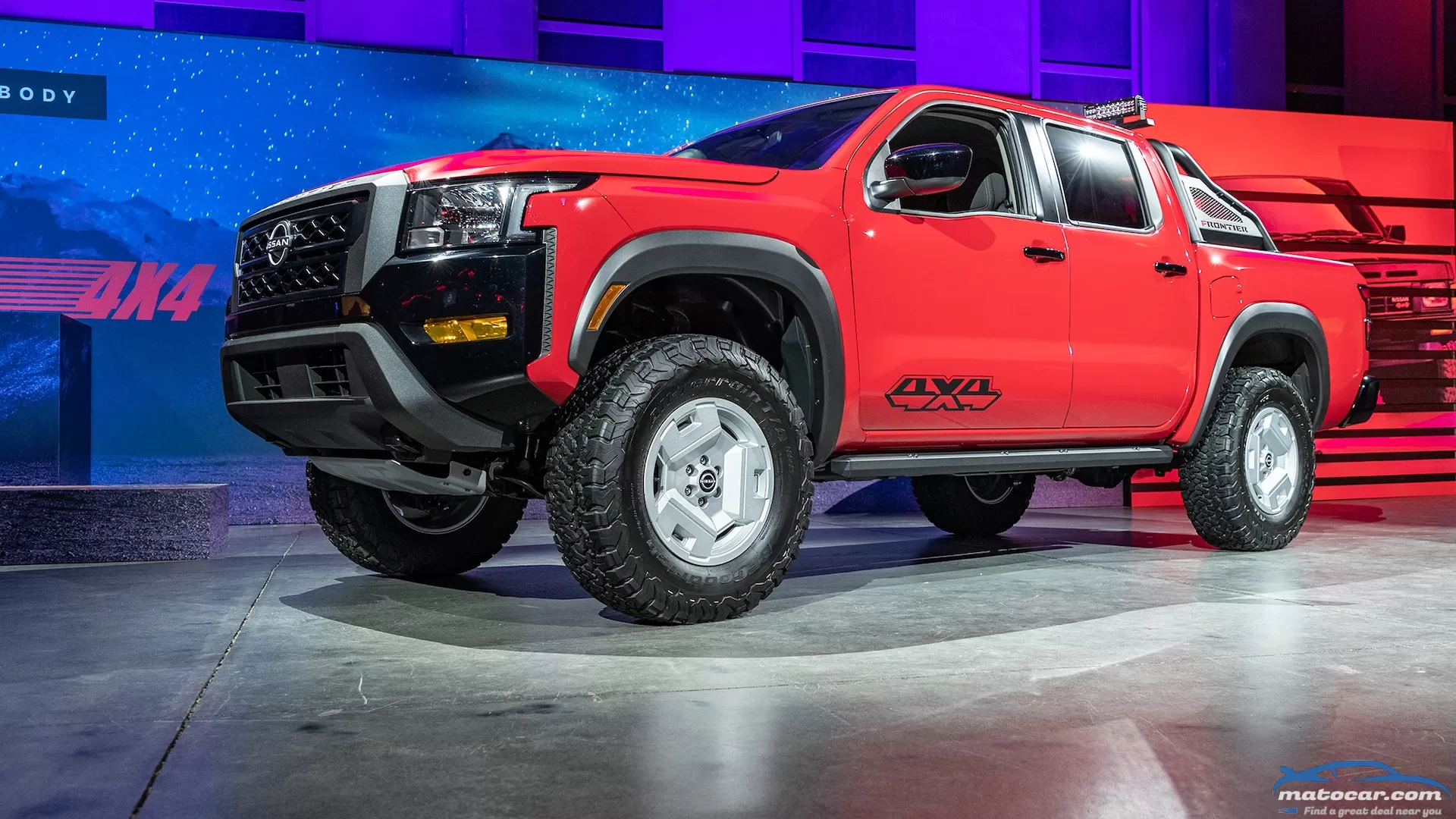

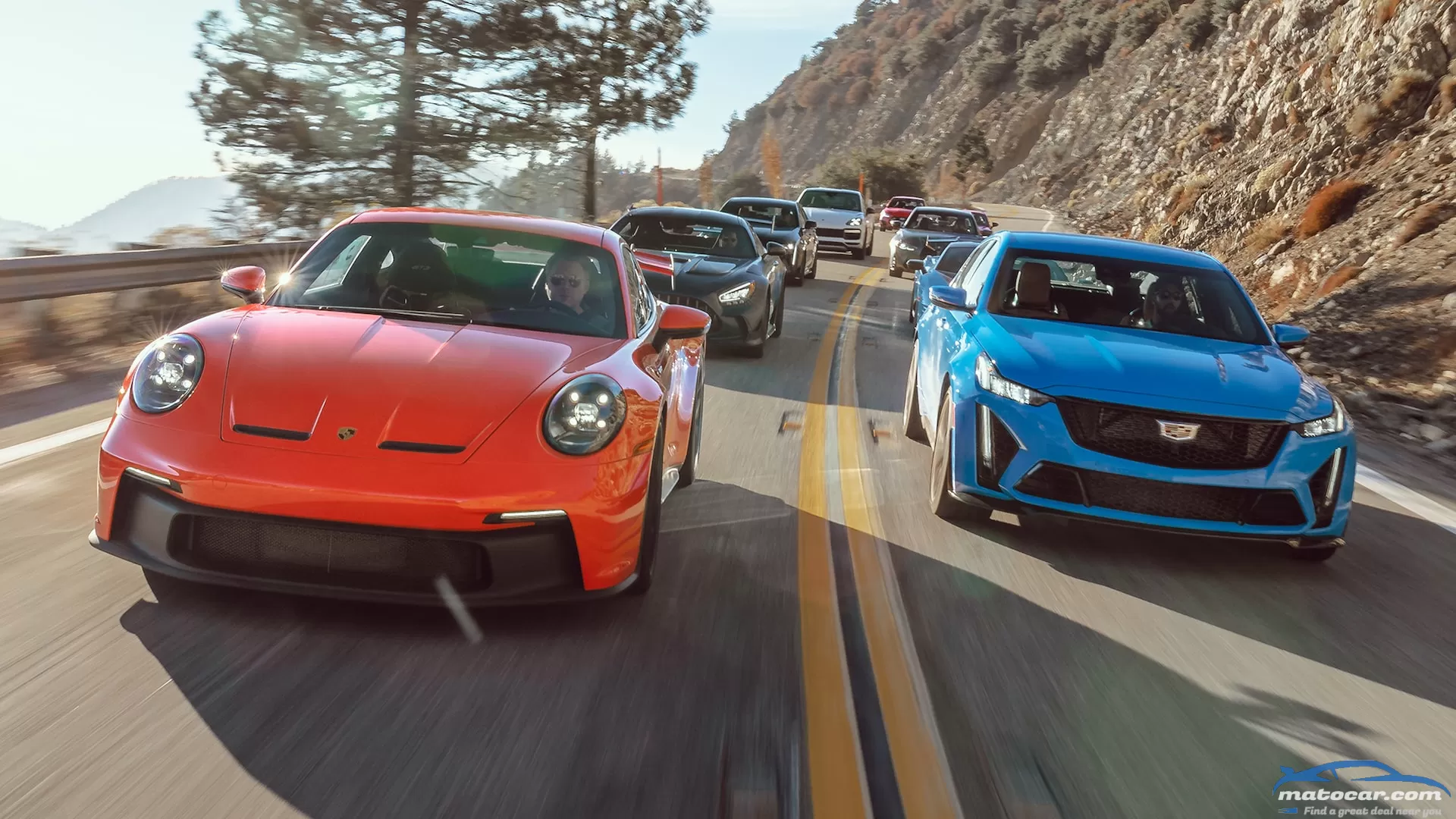
-wants-to-save-manual-transmissions-for-evs.webp)
